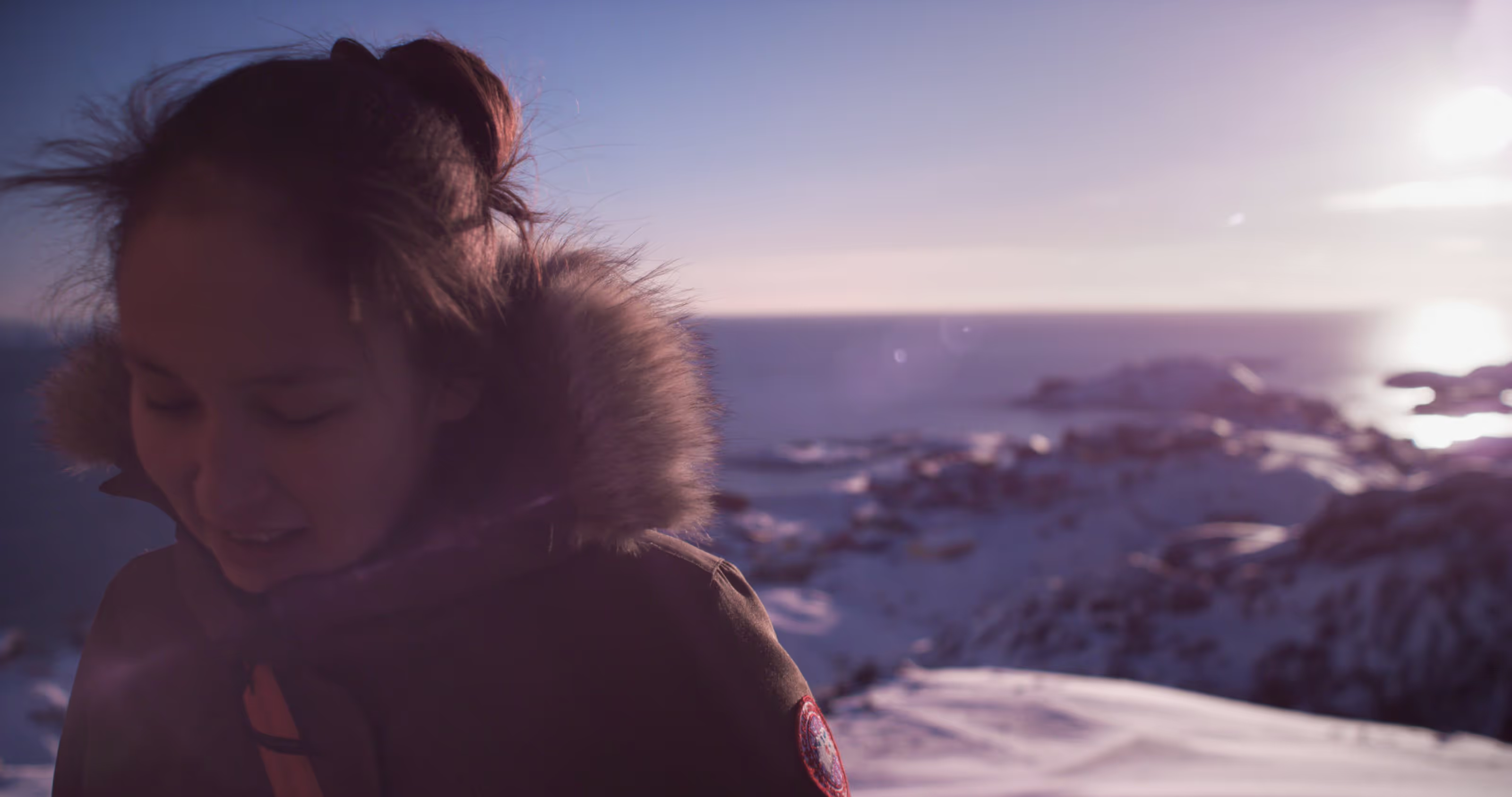Winter's Yearning Delve Deeper
Adult Non-Fiction

This list of fiction and nonfiction books, compiled by Susan Conlon, MLIS and Kim Dorman, Community Engagement Coordinator, of Princeton Public Library, provides a range of perspectives on the issues raised by the POV documentary Winter’s Yearning.
In Maniitsoq, Greenland, the US aluminum giant Alcoa Corporation has been planning to build a smelting plant for years. Pictured against immense, isolating landscapes, the people await their plant and with it, the nation's possible first steps towards economic renewal and political sovereignty.
ADULT NONFICTION
Alley, Richard B. The Two-mile Time Machine: Ice Cores, Abrupt Climate Change, and Our Future. Princeton, NJ: Princeton University Press, 2000.
Richard Alley, one of the world's leading climate researchers, tells the history of global climate changes as revealed by reading the annual rings of ice from cores drilled in Greenland.
Flaherty, Louise and Neil Christopher. Kappianaqtut: Strange Creatures and Fantastic Beings From Inuit Myths and Legends.Iqaluit, Nunavut; Toronto, Ont.: Inhabit Media Inc., 2011.
Each volume in the Kappianaqtut series provides readers with an in-depth academic examination of two mythological creatures from Inuit mythology. The series examines Inuit myths from an ethnographic perspective and fosters discussion on the variations and multiple representations of the myths and creatures in question. This volume, which explores the giants of the North and the mother of the sea mammals, has been fully revised and updated. Kappianaqtut represents the first book-length study of Inuit mythological beings written from a Northern perspective.
Gertner, Jon.The Ice at the End of the World: An Epic Journey Into Greenland’s Buried Past and Our Perilous Future.New York: Random House, 2019.
Greenland: remote, mysterious, ice-covered rock, has some of the most profound secrets of our planet--clues about where we've been, and where we might be headed. And now, with the ice sheet melting at an unprecedented rate, we are able, for the first time, to understand the story that lies within it, and what it can tell us about our future.
Glassley, William E.A Wilder Time: Notes from a Geologist at the Edge of the Greenland Ice.New York, NY: Bellevue Literary Press, 2018.
Greenland, one of the last truly wild places, contains a treasure trove of information on Earth's early history embedded in its pristine landscape. Over numerous seasons, William E. Glassley and two fellow geologists traveled there to collect samples and observe rock formations for evidence to prove a contested theory that plate tectonics, the movement of Earth's crust over its molten core, is a much more ancient process than some believed. As their research drove the scientists ever farther into regions barely explored by humans for millennia--if ever--Glassley encountered creatures and natural phenomena that gave him unexpected insight into the origins of myth, the virtues and boundaries of science, and the importance of seeking the wilderness within.
Sonne, Birgitte. Worldviews of the Greenlanders: An Inuit Arctic Perspective.Fairbanks, AK: University of Alaska Press, 2017.
Ninety years ago, Knud Rasmussen’s popular account of his scientific expeditions through Greenland and North America introduced readers to the culture and history of Arctic Natives. In the intervening century, a robust field of ethnographic research has grown around the Inuit and Yupiit of North America—but, until now, English-language readers have had little access to the broad corpus of work on Greenlandic natives. Worldviews of the Greenlanders draws upon extensive Danish and Greenlandic research on Inuit arctic peoples—as well as Birgitte Sonne’s own decades of scholarship and fieldwork—to present in rich detail the key symbols and traditional beliefs of Greenlandic Natives, as well as the changes brought about by contact with colonial traders and Christian missionaries. It includes critical updates to our knowledge of the Greenlanders’ pre-colonial world and their ideas on space, time, and other worldly beings. This expansive work will be a touchstone of Arctic Native studies for academics who wish to expand their knowledge past the boundaries of North America.
Tedesco, Marco.The Hidden Life of Ice: Dispatches from a Disappearing World. New York: The Experiment, 2020.
Marco Tedesco is a world-leading expert on Arctic ice decline and climate change. In The Hidden Life of Ice, he invites the reader to Greenland, where he and his fellow scientists research the dramatic changes afoot. Alongside the sobering facts on climate change, Tedesco shares photographs of this surreal landscape— as well as captivating legends of Greenland’s earliest local populations, epic deeds of long-ago Arctic explorers, and his own reflections.
Watt-Cloutier, Sheila. The Right to Be Cold: One Woman's Fight to Protect the Arctic and Save the Planet From Climate Change. Minneapolis, MN: University of Minnesota Press, 2018.
The Right to Be Cold is the human story of life on the front lines of climate change, told by a woman who rose from humble beginnings to become one of the most influential Indigenous environmental, cultural, and human rights advocates in the world.
Zuckoff, Mitchell.Frozen in Time: An Epic Story of Survival, and a Modern Quest for Lost Heroes of World War II.New York: Harper, 2013.
In Nov. 1942 a U.S. cargo plane crashed into the Greenland ice cap.The search-and-rescue mission got caught in a storm and also crashed but miraculously all nine men aboard survived. A second rescue operation was launched, but the plane, the Grumman Duck, flew into a storm and vanished. The survivors of the B-17 spent 148 days fighting to stay alive while waiting for rescue by famed explorer Bernt Balchen. Then in 2012 the U.S. Coast Guard and North South Polar mounted an expedition to solve the mystery of the vanished plane and recover the remains of the lost plane's crew.
